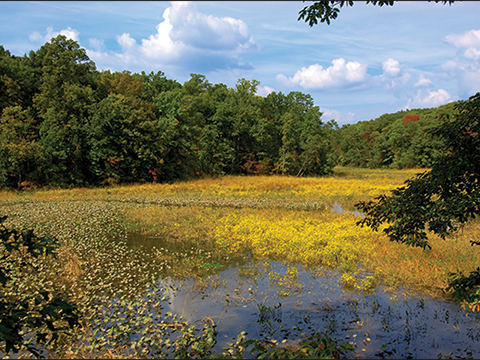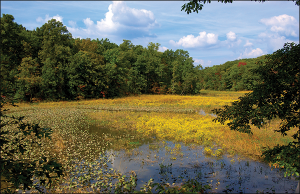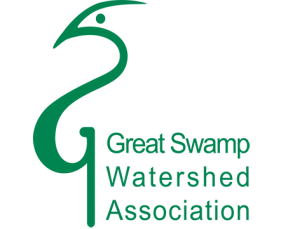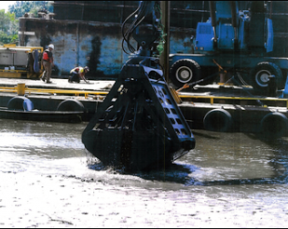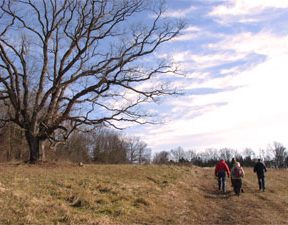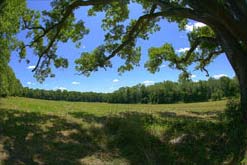Acronyms abounded this spring as the U.S. Fish & Wildlife Service (USFWS) released their draft comprehensive conservation plan (CCP) and environmental assessment (EA) for Great Swamp National Wildlife Refuge (GSNWR). This core management document will in essence guide the Refuges’ short and long term management decisions for the next 15 years.
Since Refuge lands occupy around one-quarter of the Great Swamp Watershed region, it is an important document. Not easily put off, and armed with an acronym dictionary, Great Swamp Watershed Association (GSWA) staff waded into the CCP/EA to review the proposed alternatives and learn more about how each one might lead the Refuge in a different direction. Comments resulting from that research were compiled and sent to the USFWS regional office for incorporation into the review process that will help shape the final CCP/EA.
The “preferred option” set out in the draft CCP/EA not only captures the preferred vision for Great Swamp through the USFWS lens; it attempts to balance the many different mandates, management needs, and designated Refuge purposes moving forward. It also helps shape the way those preferred priorities will be communicated to broader local and regional communities. This is achieved by defining where the Refuge will focus its energies over the coming years in terms of education and partnerships.
While many of us are lucky enough to live or work in the area surrounding GSNWR, we may not instinctively know what the Refuge’s mission and priorities are. This is why public review of the draft CCP/EA is so important. The deliberative planning, communicating, and weighing of options it embodies, serves to clarify the vision and goals that drive management decisions at the Refuge.
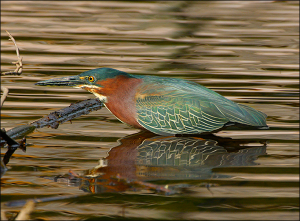

The Great Swamp National Wildlife Refuge is first and foremost a sanctuary for migratory birds like this green heron (Butorides virescens). Credit: A. Kaufman, 2011.
As you wander Pleasant Plains Road seeking indigo buntings, or refresh your souls on a leisurely bike ride along Long Hill Road, it is easy to forget that this special place was established, in accordance with the Migratory Bird Act of 1929, “…for use as an inviolate sanctuary, or for any other management purpose, for migratory birds.” Although the Refuge’s original mandate has expanded to include protection of natural resources, fish, wildlife-oriented recreation, and the conservation of endangered and threatened species, management in service of recreational aspects and uses of the land have always been secondary to those of wildlife and habitat protection.
The four management alternatives presented in the new draft CCP/EA allow for some changes in emphasis, but continue to consider the Refuge’s main goals, namely those of addressing habitat and species management, public use, and regional issues such as water quality improvement and addressing climate change.
Alternative A essentially proposes no action. It would continue current management practices and emphases as they are now. This option provides a baseline against which all other proposed alternatives will be compared.
Alternative B is the preferred option proposed by USFWS, and could best be described as the balanced option. It combines management for focal species and resource protection, with management that enhances wildlife recreation and public use. This option would create efficiencies of scale by amalgamating some management units and decreasing the amount of acreage under intense management. Alternative B also includes a future review of the Refuge’s various open-water ponds and structures (known as impoundments) and considers the option of draining some impoundments to allow for natural transition to scrub forest. Outreach to urban communities would increase under this option, as would the number of hunting opportunities.
Alternative C could best be described as the habitat plan. Strongly influenced by regional planning approaches, this option emphasizes core habitats and focuses on allowing acreage to return to conditions that might have existed if human intervention had never occurred in the Great Swamp area. The regional cast of Alternative C also calls attention to forest and succession-shrub habitats, and eliminates some open water habitat. Public-use opportunities are similar to those found in Alternative B.
Alternative D most emphasizes public-use expansion, although not at the expense of wildlife management. Written with an eye toward expanding wildlife-dependent recreational opportunities, this option would create new trails and observation areas within the Refuge, increase interpretive and educational program planning, and introduce some limited fishing opportunities.
After careful review of the draft CCP/EA (and bearing in mind our focus on resource protection for water quality, education, stewardship and sound advocacy) GSWA has chosen to support Alternative B, with some additions, deletions, and provisos. The organization’s public comments, which were submitted to the USFWS regional planning office late last month, are summarized below.
- GSWA believes that the open-water impoundment areas should remain indefinitely. Should intensive maintenance of the current impoundment system becomes infeasible, only then plans for converting these areas into passive maintenance, water-controlling spillways should be considered. Open-water habitat is both important and rare in the Great Swamp Watershed region, and the ponds at the Refuge are valuable for supporting migratory waterfowl populations and excellent wildlife-viewing opportunities.
- GSWA supports including archery as part of the Refuge’s deer management program. Further reducing the deer population would result in an increase of the forest understory, which, in turn, would benefits local and regional water quality.
- GSWA does not support the addition of a turkey hunt to the management plan. Such a hunt would offer little in terms of benefiting ecosystem function, and an increase in wildlife-related recreation might be better served by expanding trails and introducing fishing opportunities. Fishing would better-connect the Refuge and those who use it with the Passaic River, and would serve as a gateway for positively engaging youth in more wildlife-appreciation activities.
- GSWA supports the draft CCP/EA’s focus on increasing passive recreational opportunities. People who use the Refuge for recreation come to love it, and are more likely to protect it and support it in the future. Trail expansions such as those suggested across several of the management alternatives above should be considered, including expansion of trails near the Helen C. Fenske Visitor Center, conversion of dead-end trails into circular trails, and linking Refuge trails with those maintained by the Somerset County Park Commission across the Passaic River at Lord Stirling Park.
As the draft CCP/EA is first finalized, then implemented, some changes in management emphasis will be subtle, while others will be much more immediate and obvious. GSWA is confident in its support of a modified Alternative B that takes into account some of the additional concerns outlined above. The organization is also hopeful that USFWS’s final plan will continue to support and even provide opportunities to expand the ongoing watershed association partnerships that Refuge staff have cultivated in core areas of environmental advocacy, education, habitat management over the course of the last CCP/EA.
For those who would like to read the entire acronym-rich draft CCP/EA plan in its entirety, head over to http://www.fws.gov/refuge/great_swamp/what_we_do/draftccp.html. And don’t forget to bring your dictionary!
